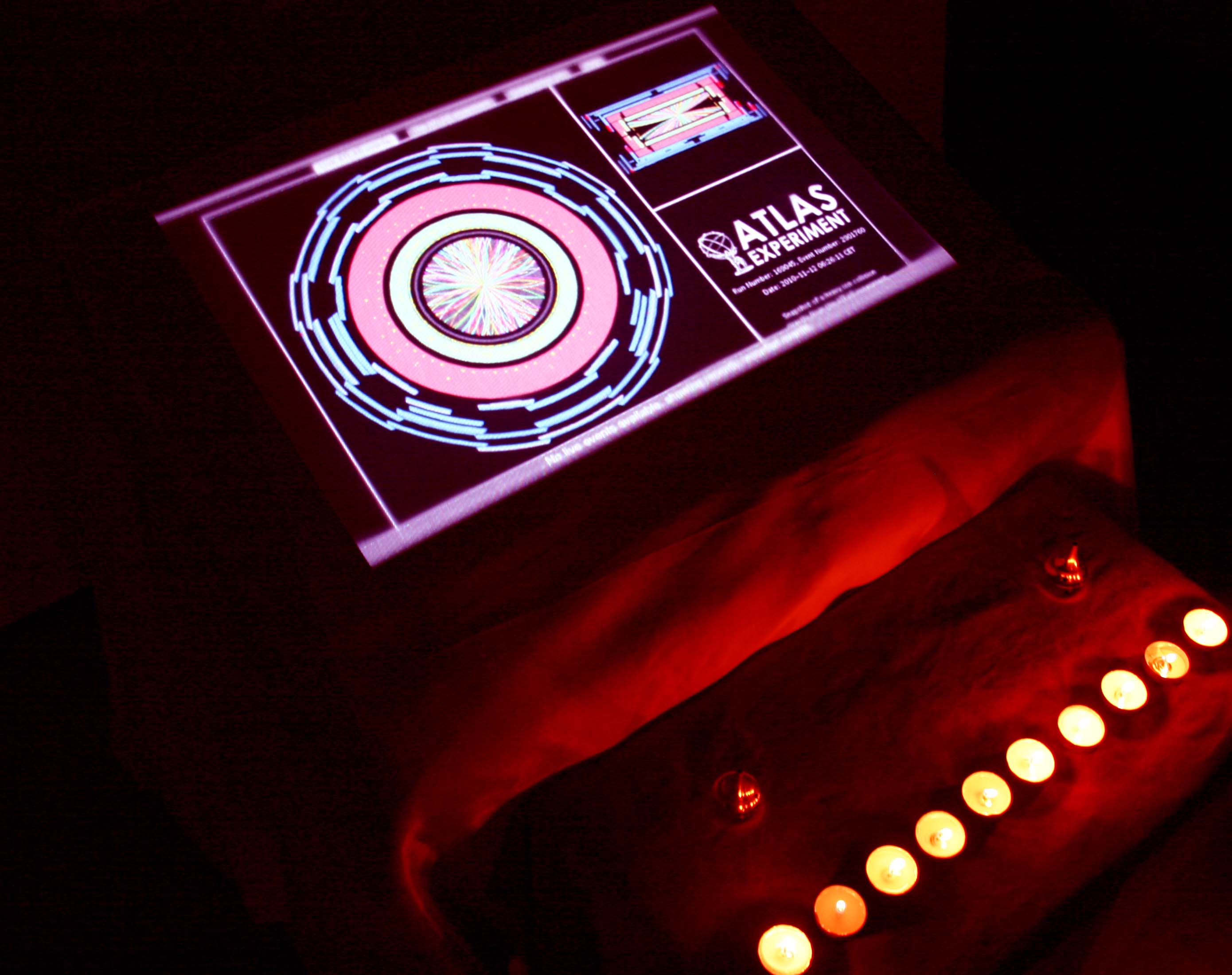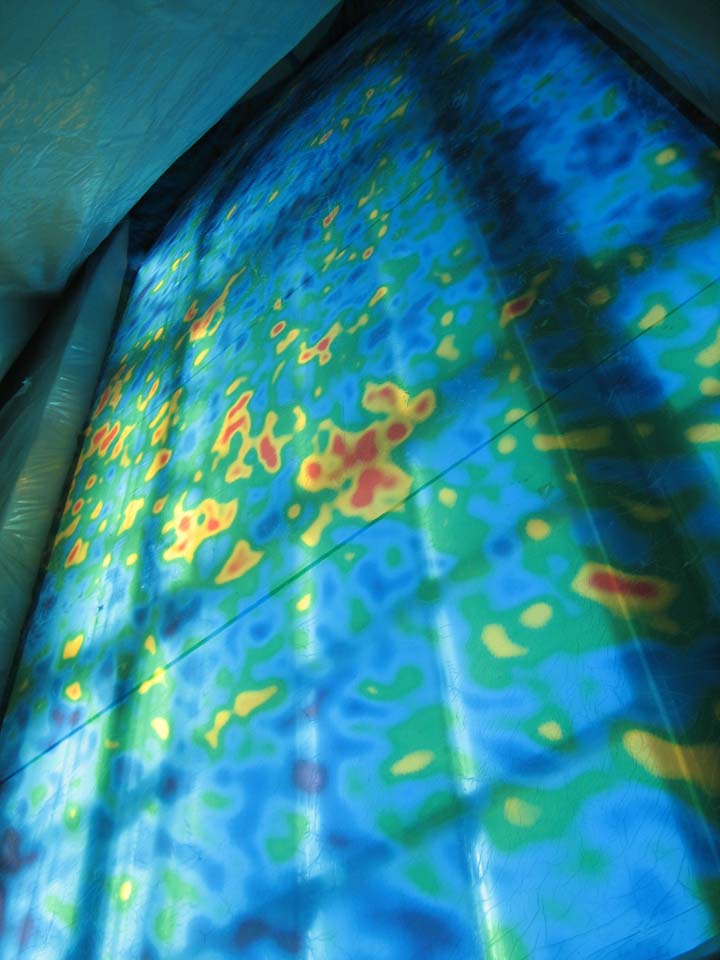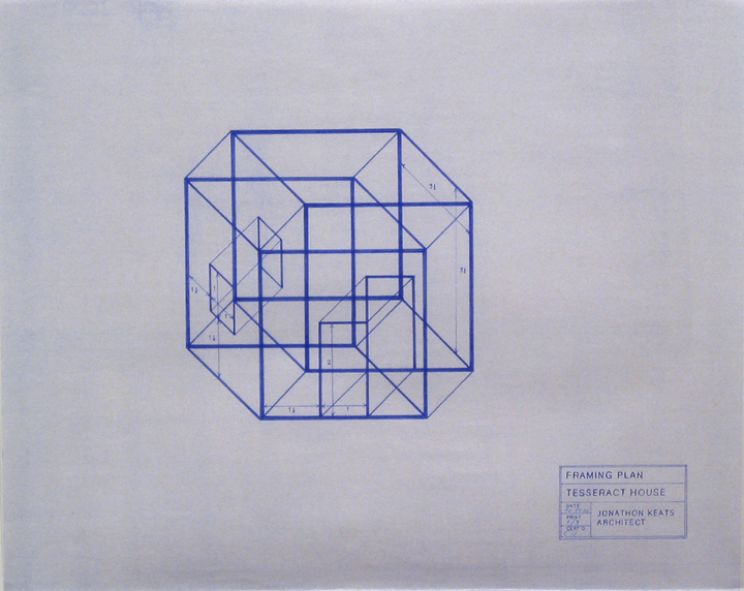Alien Thinking: The Conceptual Space Art of Jonathon Keats
LASA's Alien Plants
LASA also grew cacti in asteroid soil and potatoes in the various mineral waters, thus spawning beings that were part Earthling, part alien.
Pornography for God
Also in 2010, Keats began producing "pornography for God." Regarding the Big Bang that created our universe as an act of "divine coitus," Keats set up an altar and streamed a live feed from Europe's Large Hadron Collider particle accelerator. The LHC seeks to recreate the extreme conditions that prevailed shortly after the Big Bang, albeit on a much smaller scale.
Keats explained that the project was an attempt to prod God into creating more universes, since ours is ultimately doomed.
Creating New Universes
In 2008, Keats announced that he had discovered how to create new universes using the principles of quantum mechanics, uranium-doped glass, scintillating crystal and a few other pieces of equipment.
Above is an early prototype of Keats' "universe generator."
DIY Universe Kits
After much tinkering, Keats eventually developed a kit that he said would allow anyone to create new universes. He sold the kits — which consisted of a mason jar, a drinking straw and a piece of chewing gum — for $20.
A Monument to Science
In 2008, Keats built the "Atheon," a temple dedicated to the worship of science. This structure, erected in downtown Berkeley, Calif., featured stained-glass windows imprinted with patterns created by the cosmic microwave background radiation — the light echoes left over from the Big Bang.
Windows of the Atheon
A detailed look at the Atheon's stained-glass windows, which were imprinted with the pattern of the light echoes lingering from the universe's birth.
Devising New Miracles
In 2007's "Miracle Works" exhibition, Keats came up with a slew of "miracles," including newly devised solar systems like the one diagrammed here. He made these miracles available for licensing by any interested gods.
Breaking space news, the latest updates on rocket launches, skywatching events and more!
Extra-Dimensional Real Estate
According to string theory, our universe consists of 11 dimensions, rather than the four we're all familiar with (the three spatial dimensions, as well as time).
Keats played off this idea in 2006, embarking on a project that sought to buy and sell properties in these "extra" dimensions. Above is the blueprint for Keats' "tesseract house," which he marketed as a possible vacation home.
The First Intergalactic Art Exposition
Keats' interest in art extends beyond Earth, and he is one of the few terrestrial figures who have tried to give alien artists a voice.
In a 2006 project called the "First Intergalactic Art Exposition," he produced paintings based on signals picked up by the huge Arecibo radio telescope in Puerto Rico. Keats also broadcast some of his own works out into the cosmos.
Abstract Alien Art
Another canvas created using signals detected by the Arecibo radio telescope in Puerto Rico.

Michael Wall is a Senior Space Writer with Space.com and joined the team in 2010. He primarily covers exoplanets, spaceflight and military space, but has been known to dabble in the space art beat. His book about the search for alien life, "Out There," was published on Nov. 13, 2018. Before becoming a science writer, Michael worked as a herpetologist and wildlife biologist. He has a Ph.D. in evolutionary biology from the University of Sydney, Australia, a bachelor's degree from the University of Arizona, and a graduate certificate in science writing from the University of California, Santa Cruz. To find out what his latest project is, you can follow Michael on Twitter.










